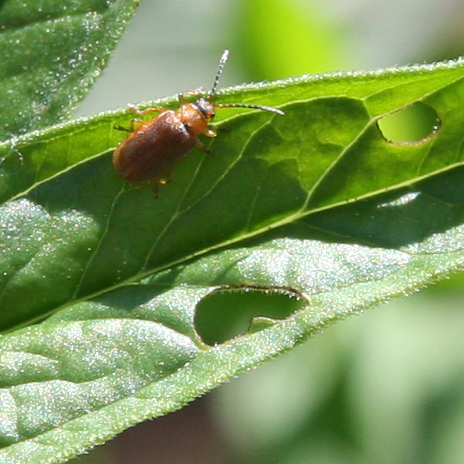Biological control
What is biological control?
This practice uses natural plant enemies to reduce, or mitigate, the effects of noxious weeds.
Why use biological control?
Many plants have been, and continue to be, introduced from foreign places to Minnesota without their natural enemies. To help in controlling some native invasive plants, insects identified as damaging to those plants are deployed. These insects feed on foliage, flowers, seed, roots or other plant parts to diminish the plants' ability to reproduce and flourish. Learn more about the USDA Biological Control Program, including the process for introducing biological control agents into the U.S.
In most cases, using natural predators (i.e. insects) is very cost effective and provides adequate control of invasive plant species. Without biological control MnDOT would place a further reliance on mowing or herbicide to control these noxious weeds.
Biological control is seldom spoken of as an extermination tool. The insects are good at controlling populations by bringing numbers of plants in a population to acceptable levels. Once the numbers are low enough we should resist the urge to finish off the infestation with herbicide. By killing the surviving plants, biological control agents are likely killed also, and the infestation can return from the seed bank.
When to deploy biological control agents
Infestations of state-listed eradicate species and small, contained, infestations of noxious weeds are not the situation to deploy biological controls. On MnDOT roadsides good deployment strategies involve sites that are 1/3 acre, or larger areas, on back slopes, not in medians. It is best to identify sites that will not be disturbed regularly or constructed in the near future.
MnDOT uses biological control insects on several invasive plant species:
Spotted knapweed (Centaurea stoebe)
Control of spotted knapweed is provided by two types of weevils that feed on different parts of the plants.
- Seed head weevils (Larnius spp.) - Provide control by consuming seed
- Root weevils (Cyphocleonus acates) - Weaken or kill plants by eating roots
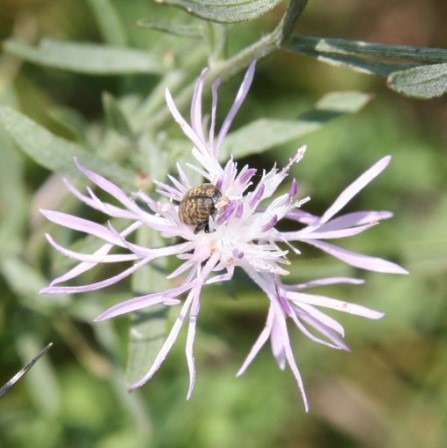
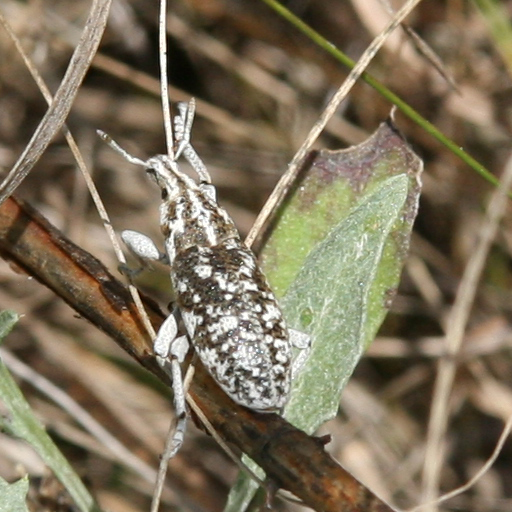
Root weevil adult
Leafy spurge (Euphorbia esula)
Control of leafy spurge is provided by two types of weevils that feed on different parts of the plants. MnDOT collects and distributes flea beetles.
- Flea beetles (Apthona lacertosa) - Adults feed on foliage and flowers while larvae do the real work below the ground, feeding on plant roots.
- Stem boring beetles (Oberea erythrocephala) - Moves on its own without help from natural resource managers. Larvae feed on root systems causing significant damage.
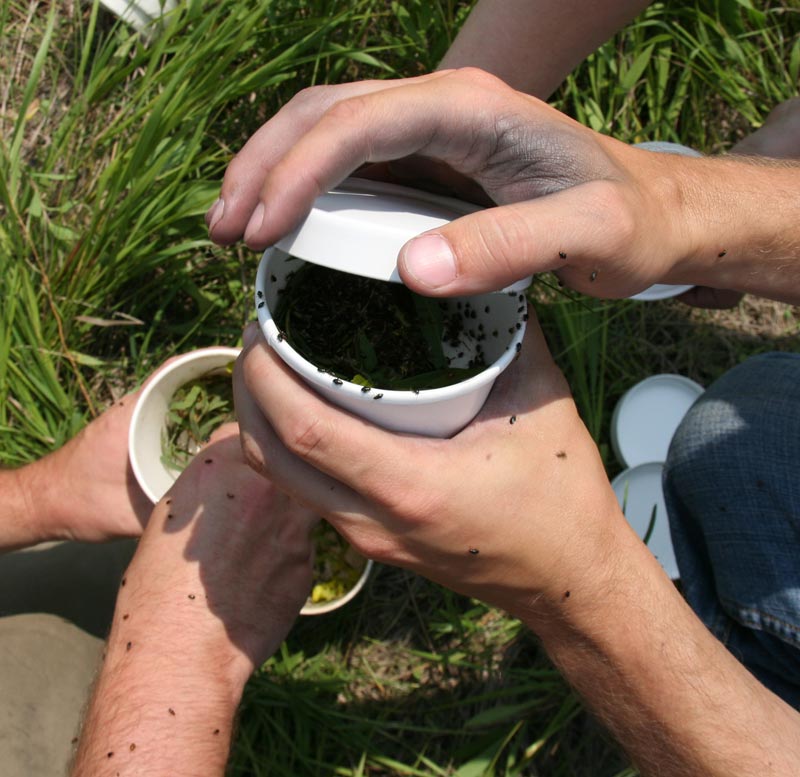
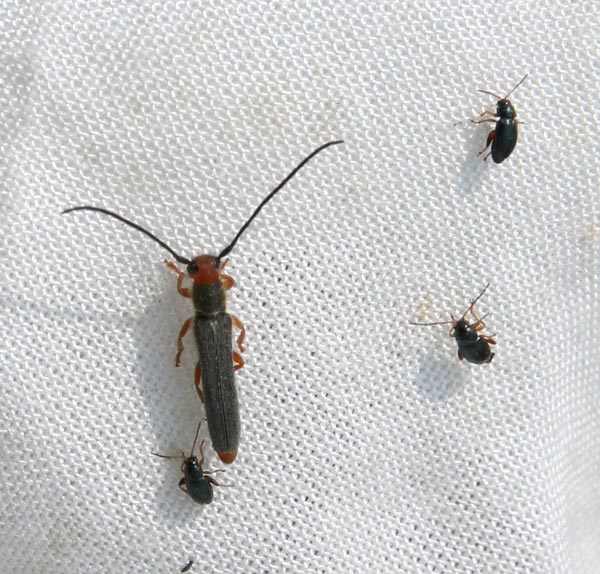
Small black flea beetles and larger stem boring beetle on a sweep net
Purple loosestrife (Lythrum salicaria)
Control of purple loosestrife is provided by two leaf feeding beetles. Efforts to move purple loosestrife leaf feeding beetles are not frequent as it appears the insects are well established and moving on their own.
- Leaf beetles (Glerucella calmariensis and G. pusilla) - Adults emerge in early spring to feed on new shoots producing some damage. Females lay two to 10 eggs and larvae hatch and begin feeding. When populations are high entire stands can be defoliated.
